Salsa Macha
Salsa Macha is a bold and flavorful Mexican chili oil made from dried chilies, oil, garlic, and, depending on the recipe, nuts or seeds.
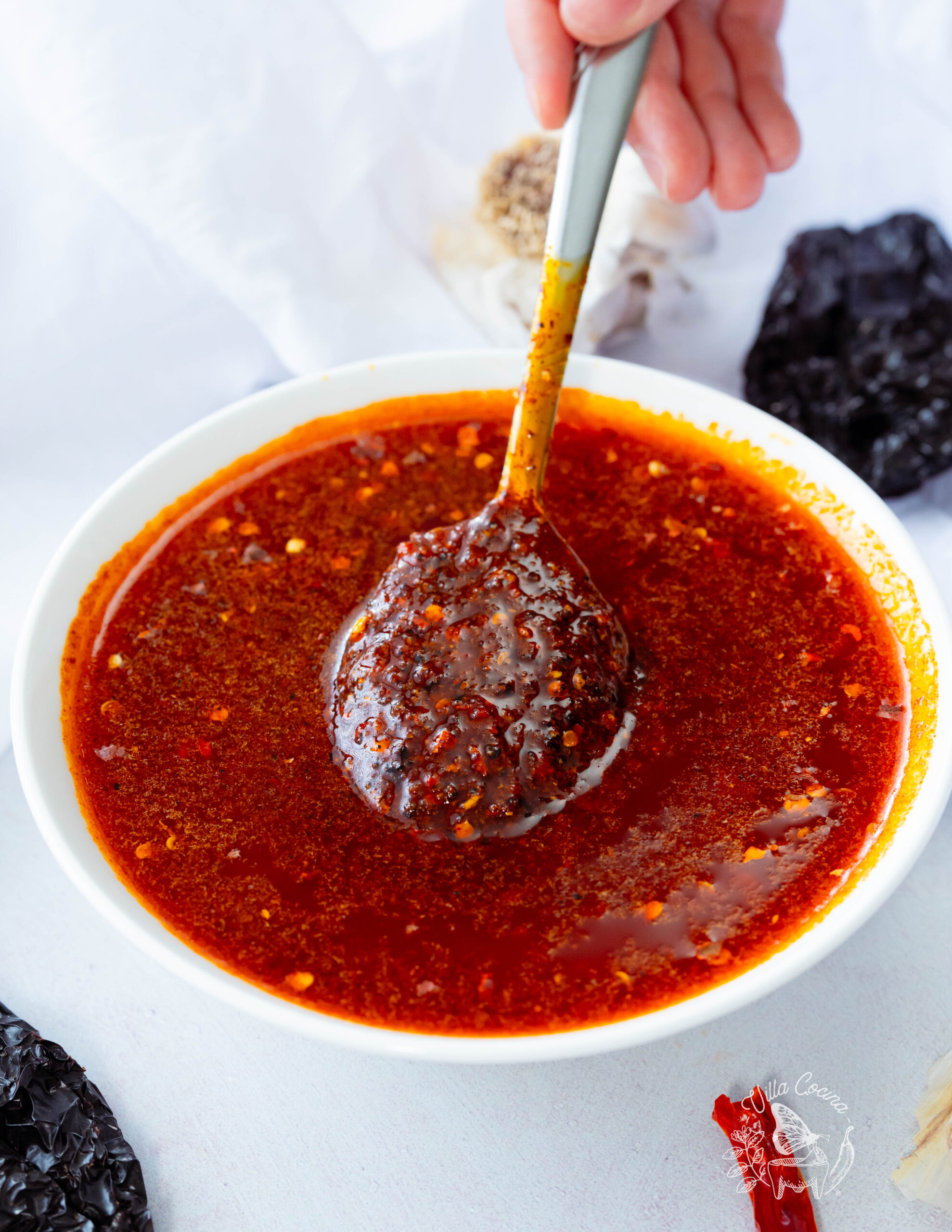
This versatile blend highlights Mexico’s finest peppers, their smoky heat complemented by the deep, nutty essence of roasted garlic. A touch of vinegar sharpens the flavors, while salt rounds them out, creating a rich and balanced kick to elevate any dish.
Using nuts in salsa macha is a fantastic way to add depth and crunch, making it perfect for dishes that benefit from extra texture. However, when it comes to brothy dishes like caldo de res, barbacoa or pozole, nuts may not always be the best choice.
That’s why a classic nut-free salsa macha is so versatile—it elevates almost any dish without overwhelming the flavors. I love them both equally for different reasons, which is why I also have a salsa macha with nuts recipe.
What is Salsa Macha?
The name macha comes from the Spanish word for “tough” or “brave,” hinting at its bold spiciness but also the profound flavors.
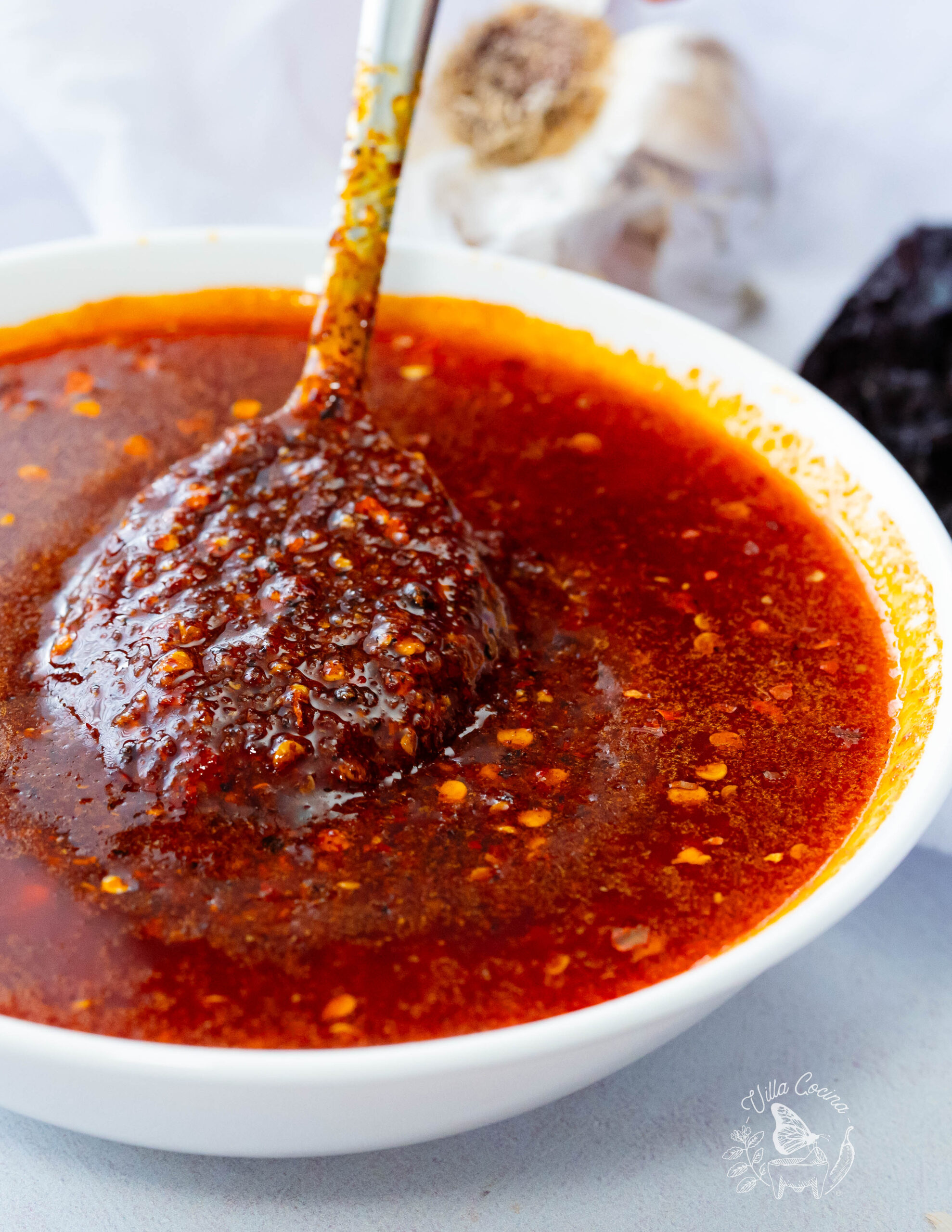
Unlike traditional salsas that use tomatoes or tomatillos, salsa macha is oil-based, creating a complex, umami-packed flavor. It’s perfect as a topping for tacos, sopes, grilled meats, or even drizzled over avocado toast—which, I’ll admit, I’m guilty of!
Salsa macha, a fiery, flavorful creation, is said to have originated in Veracruz, Mexico. A vibrant coastal state, located along the Gulf of Mexico, it’s known for its rich culture, fascinating history, and stunning beaches.
Ingredients
- Avocado Oil: Neutral in flavor with a high smoke point, it forms the smooth base for the salsa.
- Chiles de Arbol add fiery heat with a hint of smokiness, being the spiciest and smallest of the peppers used. Chiles Guajillos offer a mild, earthy heat, while Puya Chiles, similar in flavor to guajillos, pack an extra punch, making them spicier. Ancho Chile brings a lovely smokiness with subtly sweet, raisin-like flavors. Together, these peppers deliver a vibrant red color to salsa macha, each contributing its own unique tone.
- Garlic: adds a roasted, nutty, and aromatic flavor, contributing depth and savory sweetness to the salsa macha.
- Apple Cider Vinegar: Balances heat with tangy acidity, brightening the flavor.
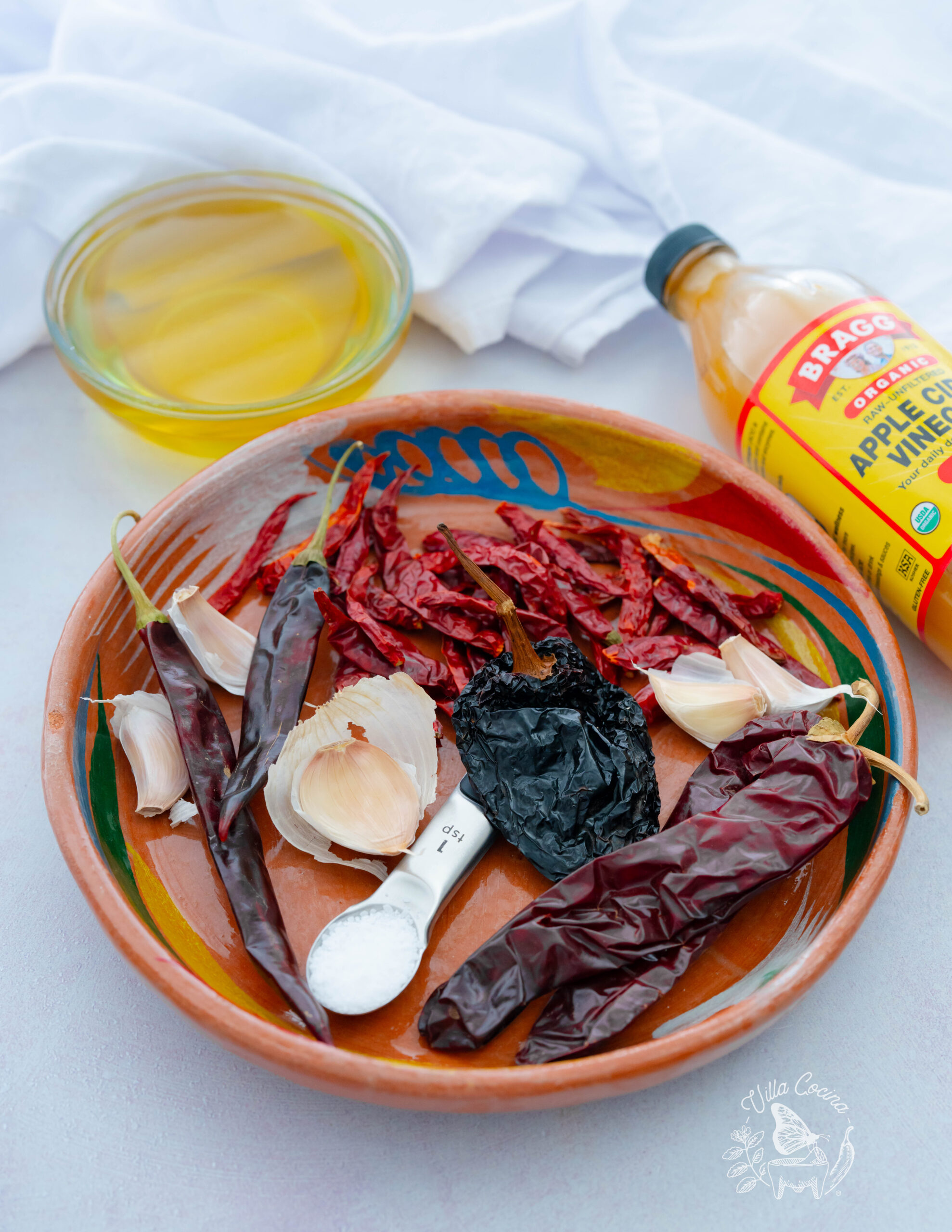
How to Make Salsa Macha
Heat the oil in a medium pan over medium to medium-low heat.
Lightly toast the chilies in batches, stirring constantly, and remove them as soon as they become fragrant—about 15-20 seconds, depending on the heat of the oil and the size of the dried peppers.
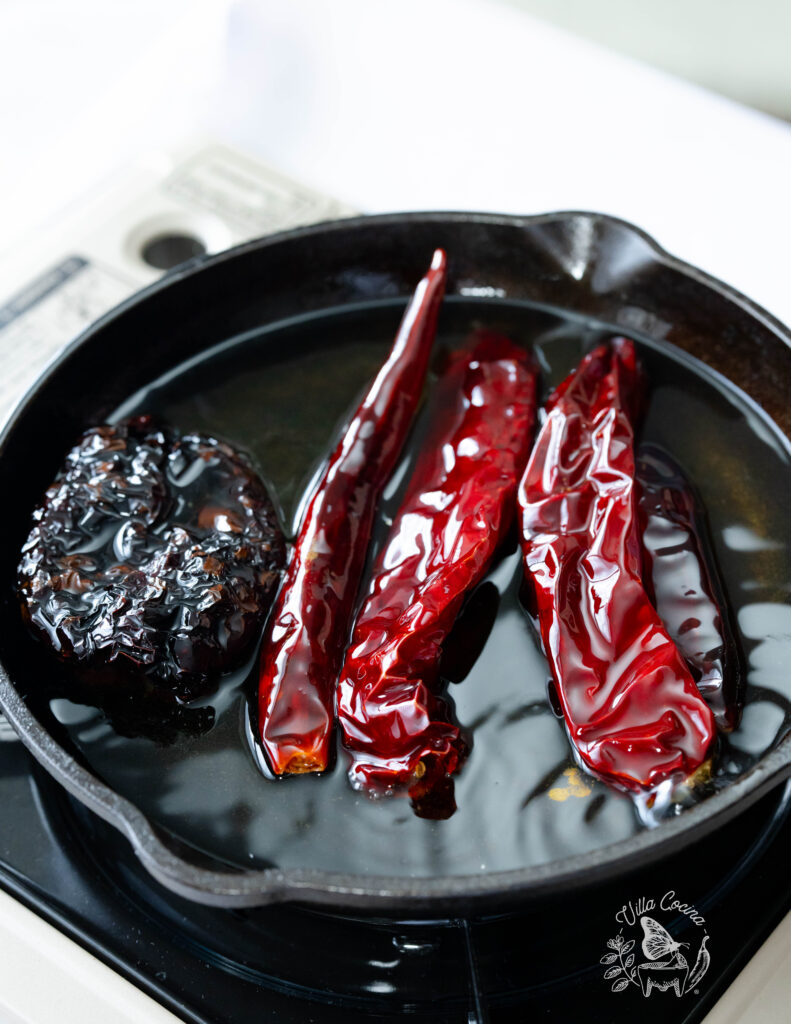
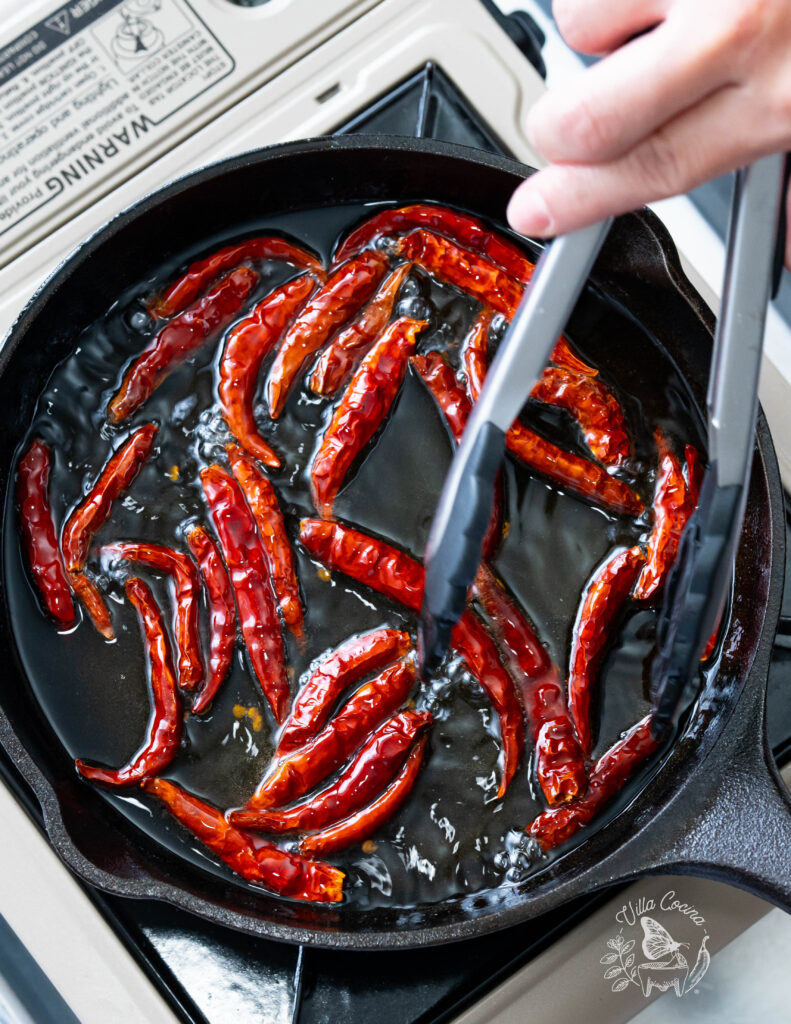
Be careful not to burn the chilies, as this will create bitterness. Once toasted, remove them from the heat and set them aside.
Sauté the garlic cloves in the oil until they’re golden brown all over, then remove them from the pan. Turn off the heat and let the oil cool completely.
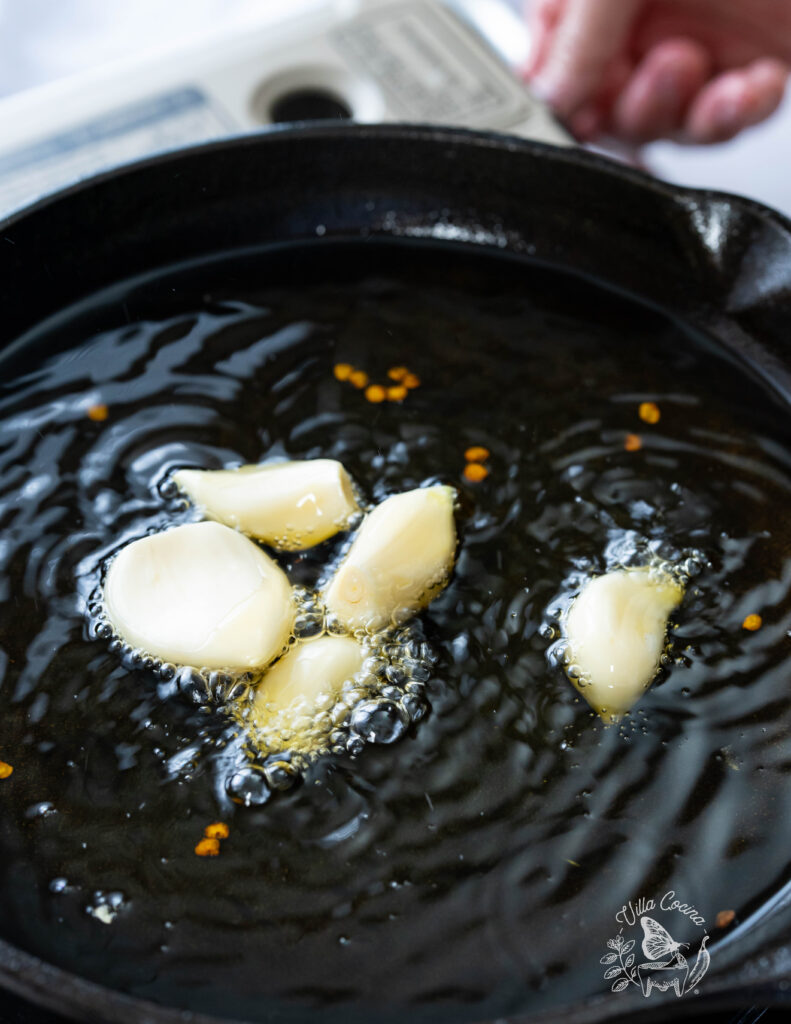
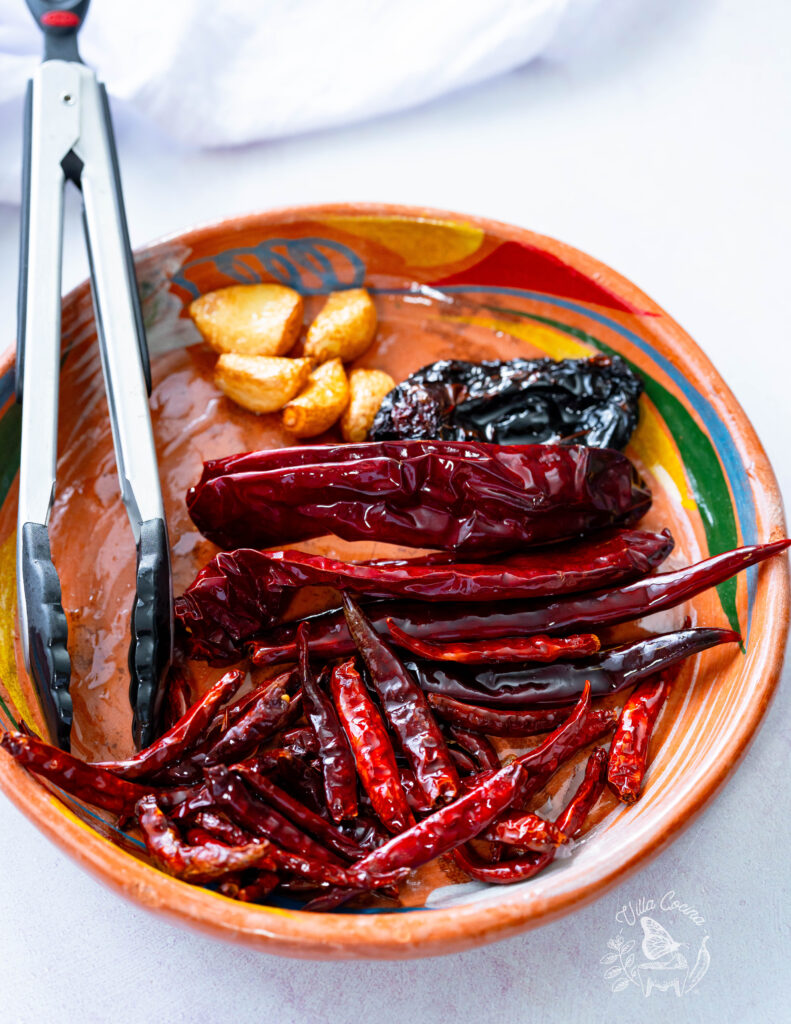
Transfer the chilies, garlic, vinegar, salt, and cooled oil into the blender. Blend until the mixture is finely chopped, but not pureed.
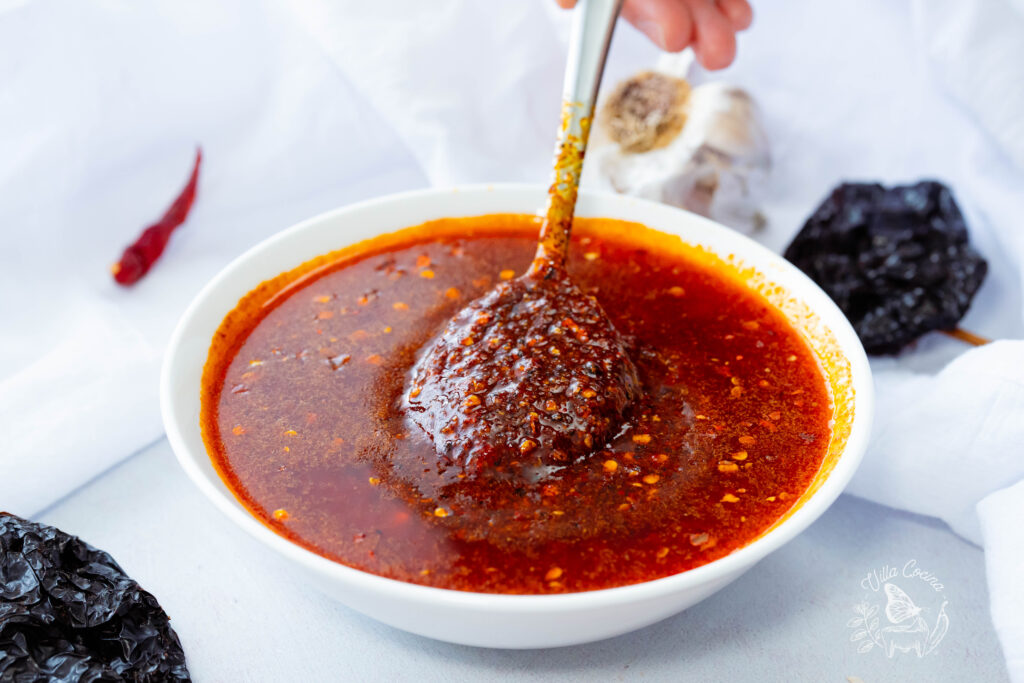
Serve immediately, or store in an airtight container in the fridge for later use.
Recipe Video Tutorial
Below is my easy to follow video tutorial on how to make this Classic Salsa Macha.
Enjoyed the video? Subscribe and tap the bell for updates on new recipes. Thank you for your support!
Flavor Profile and Heat Level
The flavor profile of salsa macha will 100% depend on the type of dried chilies used. By learning about the wide variety of chilies and their unique flavor profiles, you’ll gain the freedom to experiment and fall in love with more than just the level of heat.
A lot of people assume that dried Mexican peppers are all about the heat, but there are plenty of milder varieties that cater to more delicate tastes. You can easily adjust the spice level by adding more mild chilies, cutting back on the hotter ones, or simply removing the seeds.
Believe it or not, the quality of the peppers plays a huge role in the flavor. The higher the quality, the richer and more vibrant your dishes will taste.
For more tips on selecting and storing Mexican dried chilies, be sure to check out my article: How to Pick and Store Mexican Dried Chilies.
Variations
Salsa macha can be made in various ways, and while the name suggests it’s always spicy, the heat level can be easily adjusted.
Here are a few ways to customize the flavor:
- For a milder salsa, use more guajillo chilies instead of chiles de árbol.
- To add sweetness, include more ancho chilies or even pasilla, which have a dried fruit flavor profile.
- If you prefer a spicier salsa, increase the amount of chiles de árbol or puya, or even add chipotle “meco” for a smoky depth of flavor.
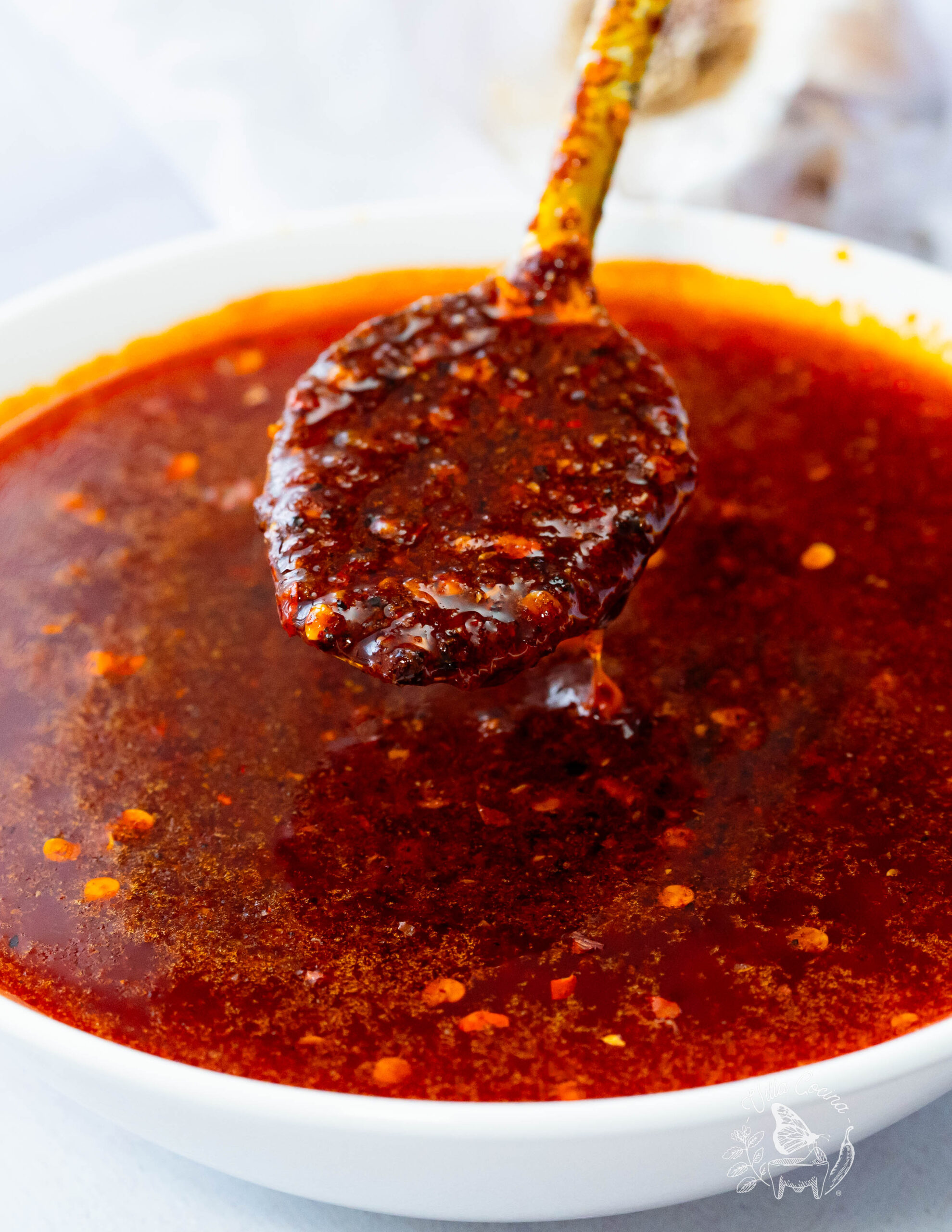
Tips for the Best Salsa Macha
Toast with care – Gently toast the chilies in batches over low heat, stirring constantly. The timing will depend on the chili size and oil temperature, so watch closely and remove them as soon as they release their fragrance.
Keep It Dry – Ensure all ingredients that come into contact with hot oil are completely dry to prevent splattering.
Avoid bitterness – Burnt chilies will make the salsa bitter. A few dark spots are fine, but if they turn completely black, they’re overdone.
When in doubt, go lighter – It’s better to under-toast than risk burning the chilies. With practice, you’ll learn to recognize the perfect doneness. And remember, you can always lower the heat—or even turn it off—if the oil gets too hot.
Blending Tips – This salsa is all about texture and contrast, so avoid over-blending. The chili skins should remain visible, not fully pureed. Pulse or blend lightly to achieve a chunky consistency.
Storage
Store salsa macha in an airtight container in the refrigerator, where it will last for up to a month. If the oil solidifies, simply let it sit at room temperature before using.
To freeze salsa macha, transfer it to an airtight, freezer-safe container, leaving room for expansion. It will last up to 2 months in the freezer. Thaw in the fridge before use.
More Salsas:
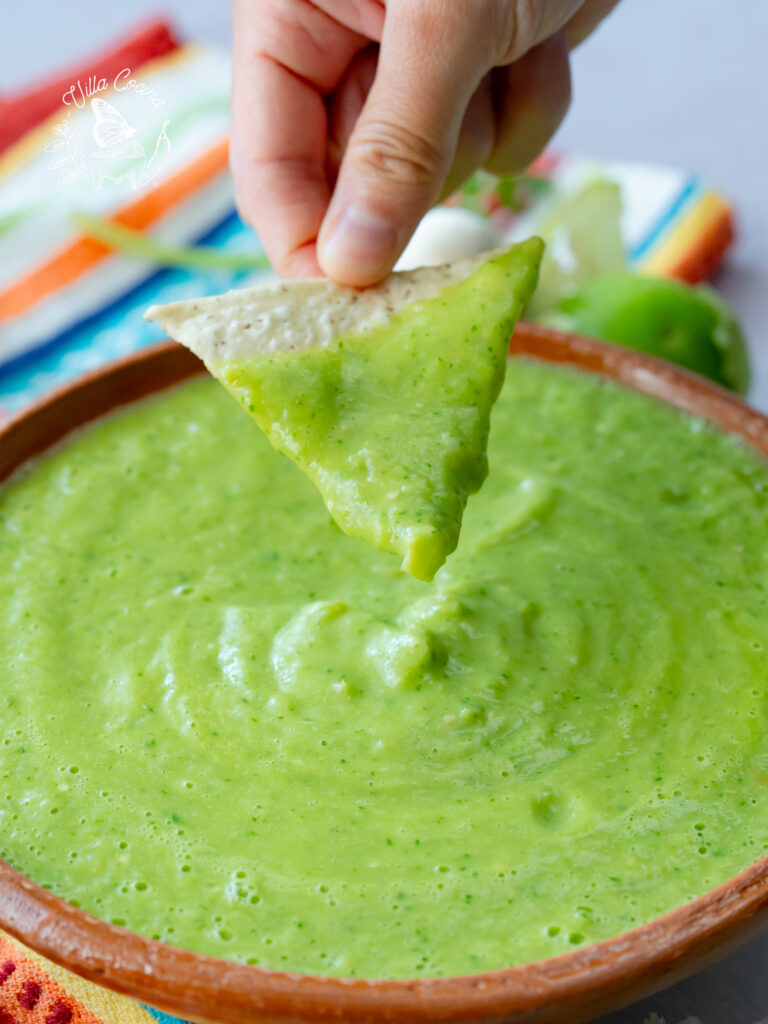
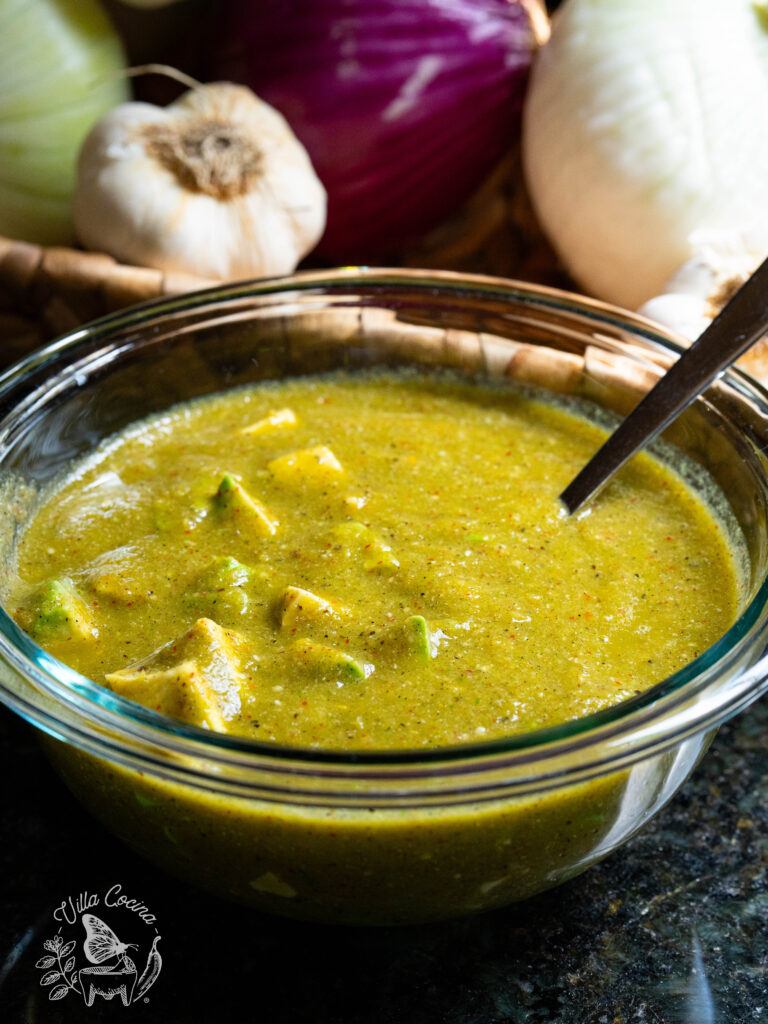
First published in July 2021, this recipe has been updated with new photos, more helpful tips and instructions, and a few tweaks to enhance the overall experience.
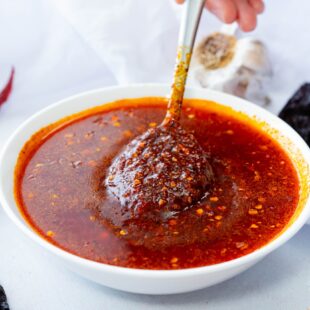
Easy Salsa Macha Recipe
Ingredients
- 1 cup avocado oil
- 15 g chiles de arbol, stemmed
- 2 chiles guajillos, stemmed
- 2 puya chiles, stemmed
- 1 ancho chile, stemmed
- 5 garlic cloves, peeled
- 1 tbsp apple cider vinegar
- 1 tsp kosher salt or to taste
Instructions
- Heat the oil in a medium pan over medium to medium-low heat.
- Lightly toast the chilies in batches, stirring constantly, and remove them as soon as they become fragrant—about 15-20 seconds, depending on the heat of the oil and the size of the dried peppers.
- Be careful not to burn the chilies, as this will create bitterness. Once toasted, remove them from the heat and set them aside.
- Sauté the garlic cloves in the oil until they’re golden brown all over, then remove them from the pan. Turn off the heat and let the oil cool completely.
- Transfer the chilies, garlic, vinegar, salt, and cooled oil into the blender. Blend until the mixture is finely chopped, but not pureed.
- Serve immediately, or store in an airtight container in the fridge for later use.
Did you make this recipe?
Show some love! Tag @villacocinaofficial on Instagram and drop a 5-star review. Your support means everything—thanks!

